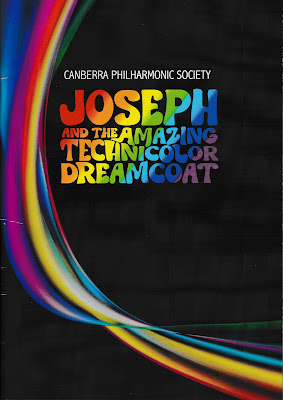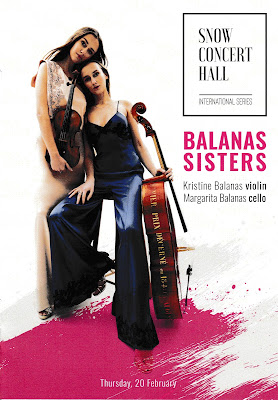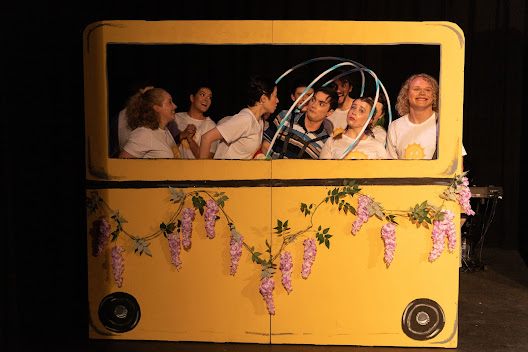Lyrics by Tim Rice
Music by Andrew Lloyd Webber
Directed by Kelda McManus
Music Direction by Jenna Hinton
Choreography by Caitlin Schilg
Conducted by Craig Johnson
Reviewed by Len Power 27 February 2025
An early musical by Andrew Lloyd Webber and Tim Rice, Joseph and the Amazing Technicolor Dreamcoat is based on the character of Joseph from the Bible’s Book of Genesis. The story is told as a sung-through musical and the musical score ranges through various familiar styles including Elvis-themed rock and roll, calypso, jazz, Country and Western, French ballads and 1970s go-go.
These ever-changing styles in the score give a director the golden opportunity to be wildly creative. The director of this production, Kelda McManus, has produced a highly colourful, imaginative and joyous show that will please everyone from children to adults.
The large cast includes a group of children who perform their numbers sweetly with discipline and charm. This production includes some adult cast members who began their theatrical life as children in earlier productions. Hopefully many of the children in this production will develop a lifetime love of theatre from this experience.
 |
| Tim Dal Cortivo (Joseph) with the children |
Amongst the excellent adult cast, there are some standouts. As Joseph, Tim Dal Cortivo gives a highly appealing performance throughout the show. He gave a particularly moving interpretation of the song, “Close Every Door.
 |
| Taylor Paliaga (Narrator) and the cast |
The Narrator was played by Taylor Paliaga with strength and energy and her fine singing of the second act opening song, “Pharaoh’s Story”, was particularly memorable.
 |
| Joe Dinn (Pharaoh) and the cast |
“Song of the King” was a showstopper for Joe Dinn, who gave the Pharoah’s song an outrageous and hilarious over-the-top quality that worked superbly. Joseph’s Brothers, led by Matthew Paliaga, gave a rousing performance of “Those Canaan Days”. The strength of their voices gave this song a notable depth of feeling.
Caitlin Schilg’s choreography suited the changing styles of the show and the cast’s abilities. The trained dancers in the company were given their chance to shine.
The set design by Ian Croker and Kelda McManus worked very well in conjunction with an imaginative lighting design by Alexander Clifford. The sound design of Telia Jansen was well-balanced between the cast and the orchestra, which was nicely conducted by Craig Johnson. The musical director, Jenna Hinton, obtained strong singing performances by the whole cast and Jennie Norberry’s costume designs were colourful and creative.
This is a very well-produced show that is suitable for all ages. It’s imaginative, colourful and enthusiastically played by the entire cast.
Photos by Ben Appleton - Photox
Len Power's reviews are also broadcast on Artsound FM 92.7 in the ‘Arts Cafe’ and ‘Arts About’ programs.













